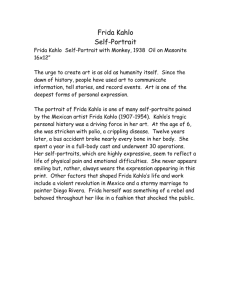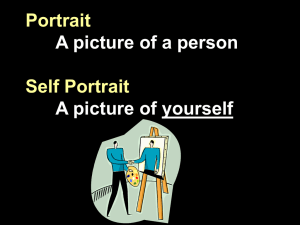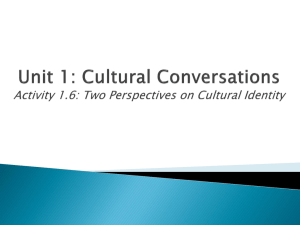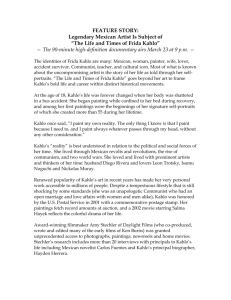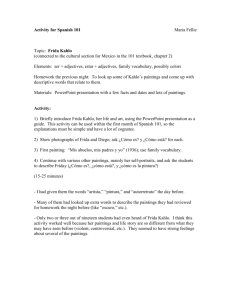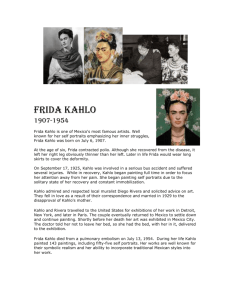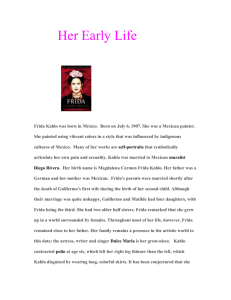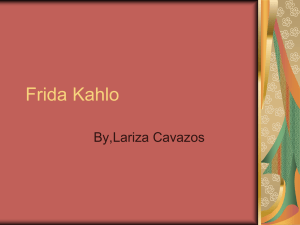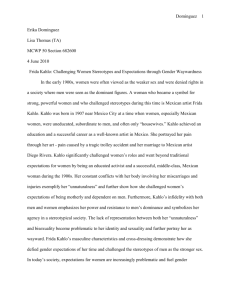Annotated Bibliography Template
advertisement
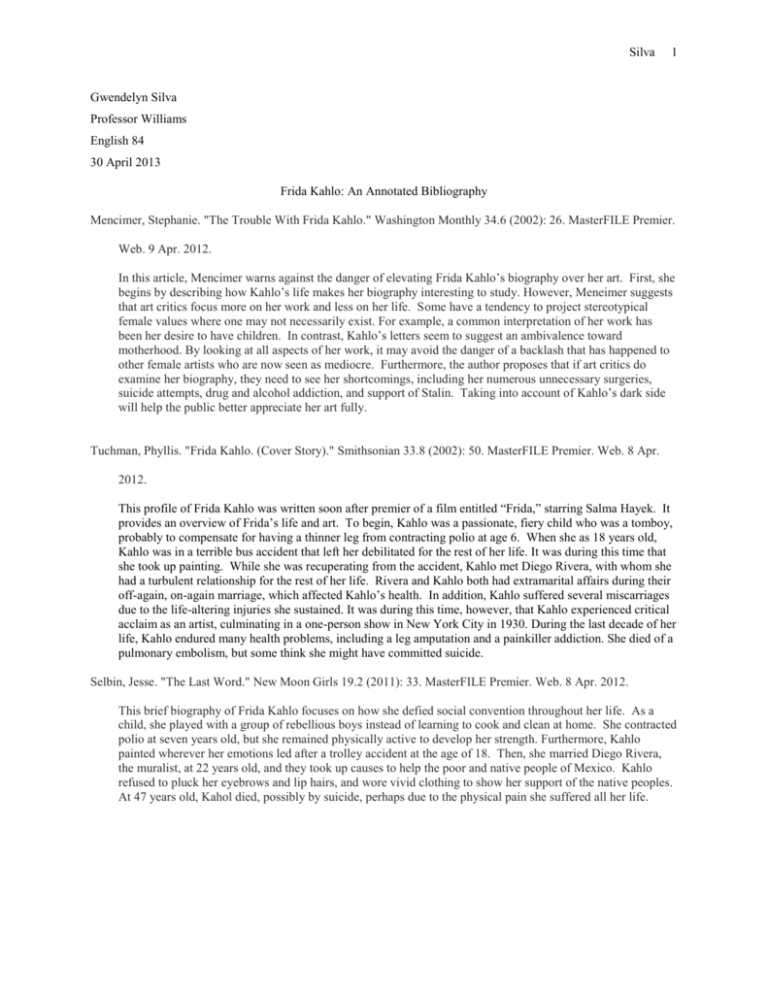
Silva 1 Gwendelyn Silva Professor Williams English 84 30 April 2013 Frida Kahlo: An Annotated Bibliography Mencimer, Stephanie. "The Trouble With Frida Kahlo." Washington Monthly 34.6 (2002): 26. MasterFILE Premier. Web. 9 Apr. 2012. In this article, Mencimer warns against the danger of elevating Frida Kahlo’s biography over her art. First, she begins by describing how Kahlo’s life makes her biography interesting to study. However, Meneimer suggests that art critics focus more on her work and less on her life. Some have a tendency to project stereotypical female values where one may not necessarily exist. For example, a common interpretation of her work has been her desire to have children. In contrast, Kahlo’s letters seem to suggest an ambivalence toward motherhood. By looking at all aspects of her work, it may avoid the danger of a backlash that has happened to other female artists who are now seen as mediocre. Furthermore, the author proposes that if art critics do examine her biography, they need to see her shortcomings, including her numerous unnecessary surgeries, suicide attempts, drug and alcohol addiction, and support of Stalin. Taking into account of Kahlo’s dark side will help the public better appreciate her art fully. Tuchman, Phyllis. "Frida Kahlo. (Cover Story)." Smithsonian 33.8 (2002): 50. MasterFILE Premier. Web. 8 Apr. 2012. This profile of Frida Kahlo was written soon after premier of a film entitled “Frida,” starring Salma Hayek. It provides an overview of Frida’s life and art. To begin, Kahlo was a passionate, fiery child who was a tomboy, probably to compensate for having a thinner leg from contracting polio at age 6. When she as 18 years old, Kahlo was in a terrible bus accident that left her debilitated for the rest of her life. It was during this time that she took up painting. While she was recuperating from the accident, Kahlo met Diego Rivera, with whom she had a turbulent relationship for the rest of her life. Rivera and Kahlo both had extramarital affairs during their off-again, on-again marriage, which affected Kahlo’s health. In addition, Kahlo suffered several miscarriages due to the life-altering injuries she sustained. It was during this time, however, that Kahlo experienced critical acclaim as an artist, culminating in a one-person show in New York City in 1930. During the last decade of her life, Kahlo endured many health problems, including a leg amputation and a painkiller addiction. She died of a pulmonary embolism, but some think she might have committed suicide. Selbin, Jesse. "The Last Word." New Moon Girls 19.2 (2011): 33. MasterFILE Premier. Web. 8 Apr. 2012. This brief biography of Frida Kahlo focuses on how she defied social convention throughout her life. As a child, she played with a group of rebellious boys instead of learning to cook and clean at home. She contracted polio at seven years old, but she remained physically active to develop her strength. Furthermore, Kahlo painted wherever her emotions led after a trolley accident at the age of 18. Then, she married Diego Rivera, the muralist, at 22 years old, and they took up causes to help the poor and native people of Mexico. Kahlo refused to pluck her eyebrows and lip hairs, and wore vivid clothing to show her support of the native peoples. At 47 years old, Kahol died, possibly by suicide, perhaps due to the physical pain she suffered all her life.
